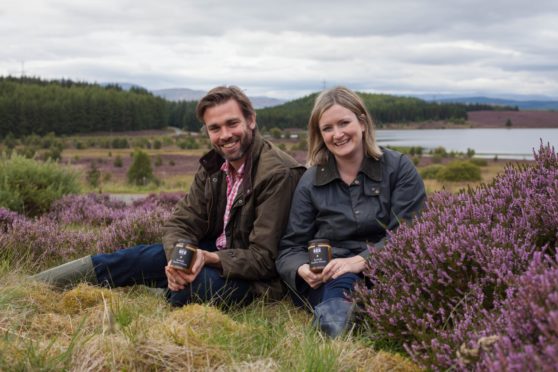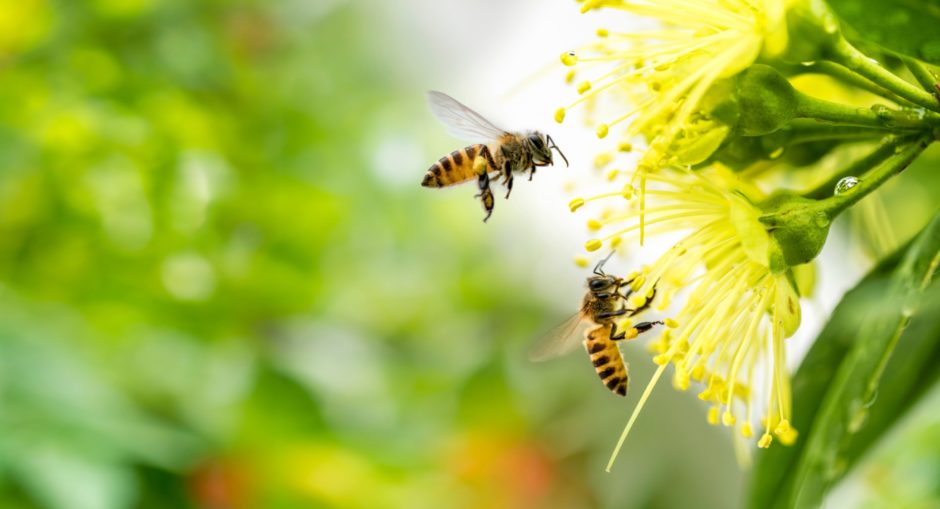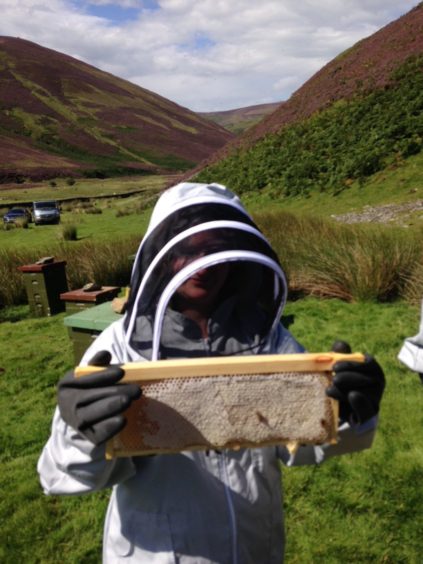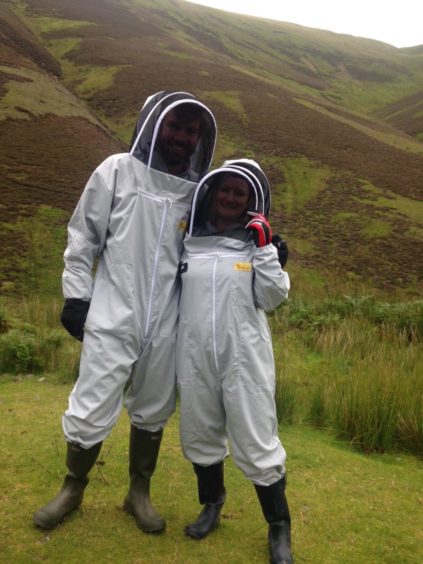
She’s always been sweet on sustainability and Suzie Millar is buzzing about her new career as queen of bees.
It’s been three years since she quit her career as a chiropractor for a mission to protect our pollinators.
And life has been a hive of activity ever since. The 38-year-old and husband Iain are the brains behind the Scottish Bee Company.
As well as producing honey, the firm has vowed to increase the country’s bee population.
And its sister charity, Repollinate, aims to protect all types of pollinators through wildflowers spaces and education programmes across Scotland.
“It’s been chaotic and a big challenge, but I am absolutely loving it,” Suzie said. “Ever since I was young, I wanted to do something a bit different and felt a pull to doing something socially-responsible and environmentally-friendly.”
Three years ago, Suzie and financial services worker Iain developed a fascination with bees.
“The truth is bees are so good – and so important – for the environment,” Suzie said.
“Most of the food we eat relies on their pollination. We wouldn’t be able to survive without them.”
The couple, who live in East Lothian, conducted some research and soon realised there was a deficit of bees in Scotland.
“The stats suggested the UK was about 150,000 hives short,” Suzie said. “And pesticides were killing bees off. We thought we had to do something about it.”
The Millars adopted some bees, hired a team of expert bee farmers and brought them together in the heather covered hills of Scotland.
Along with dwindling bee numbers, they were also astonished to find how much honey consumed in the UK is imported from around the world. They felt strongly that we needed more, homegrown, bee-friendly honey.
It soon turned into a honey production business, with hundreds of hives throughout the Lothians, Dumfriesshire, Stirlingshire, Fife and Aberdeenshire.
And the project has already resulted in tens of millions more bees in our Scottish skies. In fact, in the height of the summer, the Scottish Bee Company has around 24 million bees under its wings.
Suzie has become an expert in honey, after attaining honey sommelier status just before the pandemic hit. “I was getting so into the bee side of things that I realised I didn’t know enough about honey,” she said.
The Scottish Bee Company’s heather honey is amongst the world’s top manganese-containing food products. Manganese is an essential mineral. As well as its high antioxidant qualities, it plays a role in helping make and activate enzymes in the body involved in protecting tissues from damage and in the metabolism of nutrients. It also helps maintain healthy bones.
The discovery that The Scottish Bee Company’s honey contains 10 times more manganese than rivals across the globe has even seen it dubbed the world’s latest superfood.
And the honey is following in the footsteps of Scotland’s national drink, Irn-Bru, after cracking the Far East market in Japan and Singapore. It’s great news for Suzie, whose newfound nose for honey means she can ensure the honey is of the highest quality.
“A lot of honeys out there are counterfeits. Quite a few only have 40 to 50% actual honey. Many are adulterated, filled with sugars, glucose, dextrose,” Suzie explained.
“The sommelier course was life-changing. Of course, it’s about spotting a good honey, but it also taught me how to identify a bad honey. Small things like smoke getting into the honey or it being stored in the wrong container and how that can affect the quality.
“To be honest, I didn’t really eat much honey before, but I eat it all the time now. Well, someone has to taste it!”
With the bee season starting later this month, Suzie is hoping for a busy summer.
“Covid has meant we’ve had to pause, and the bees are dormant in the colder weather, but we’re hoping 2021 will be a good and exciting year.
“We have lots of projects planned, it is just a case of waiting to see if things will open up enough for us to be able to do them.”
Suzie is currently expecting a baby brother for son Rory, three, so she can’t go near the hives.
But she’s looking forward to getting back to the buzz of the bees again over the next few months.
“It’s a strange thing standing in the suit surrounded by bees flying round,” she says. “I do still get that initial sense of panic when I hear the noise. But after a while it becomes quite relaxing and calming, almost meditative. I actually quite like it. We are living a new life now, filled with bees.
“Years ago, I could never have predicted this would be our way of making a difference years ago, but it is now a path we are passionate about – and we hope to help protect Scotland’s pollinators for a long time to come.”

Enjoy the convenience of having The Sunday Post delivered as a digital ePaper straight to your smartphone, tablet or computer.
Subscribe for only £5.49 a month and enjoy all the benefits of the printed paper as a digital replica.
Subscribe © Shutterstock / RUKSUTAKARN studi
© Shutterstock / RUKSUTAKARN studi
 © Supplied
© Supplied